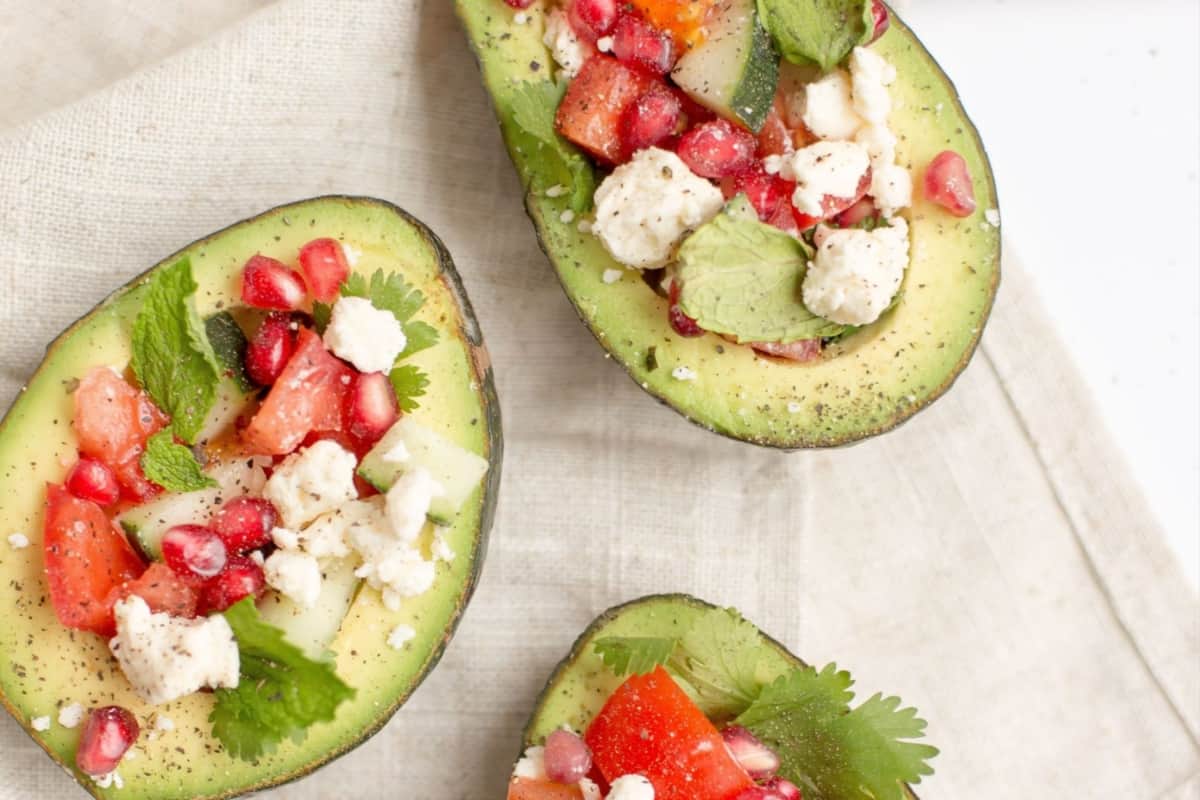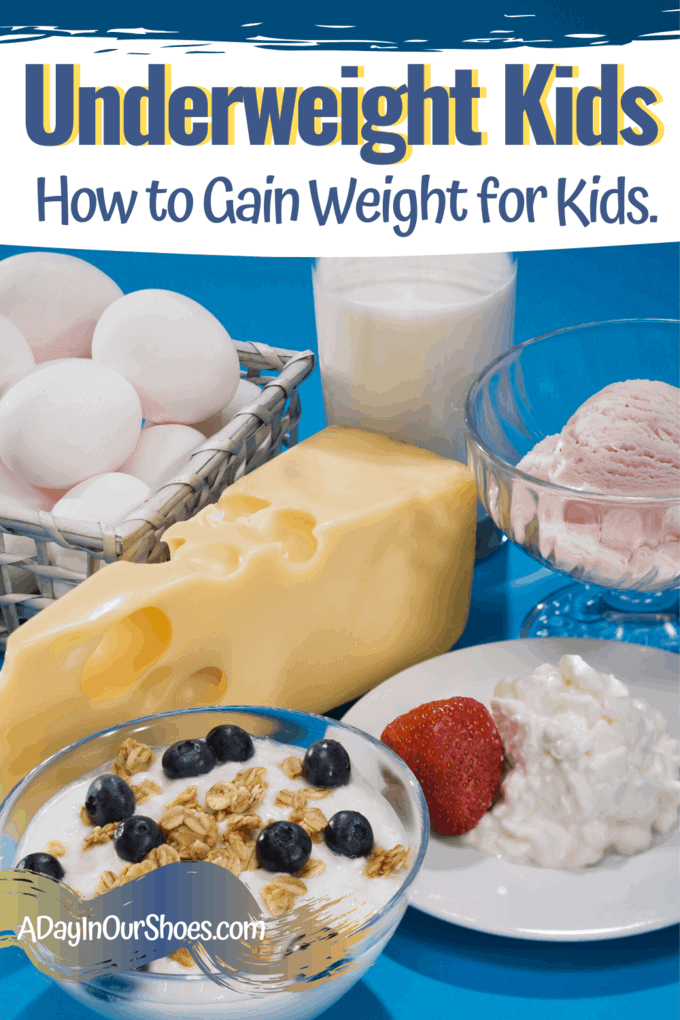Got Picky Eaters? How to Make a Child Gain Weight Fast and Add 500 Calories a Day
We spend so much time talking about childhood obesity that we often forget that there is a group of kids out there who need to gain weight.
My picky eaters fell into that group. I’m jealous of parents who have kids who will try anything. That is not our family. My 12-year-old needed to gain weight fast, and it was the pandemic, too. Our options were limited.

What if your child needs to add calories and gain weight? And what if they are not huge fans of eating? Mine are not.
When you have a picky eater, high-calorie foods and healthy high-calorie snacks are not so easy to find.
How Many Calories Should I Consume Per Day to Gain Weight?
According to my college professors and the Mayo Clinic, a lb is 3500 calories.
Please talk with your child’s doctor to determine weight loss or gain. They can estimate how many calories your child is burning per day.
The simple math is this: If you can create a 500-calorie surplus daily, that’s a pound per week.

Why a Child May not be Gaining Weight
If your child is affected by any of the below items, please seek a physician’s advice. You want to develop healthy eating preferences early.
- medications
- ARFID (in this case, please seek a physician’s advice!)
- food preferences
- texture preferences (sensory)
- feeding issues/mechanics
- excessive activity during the day (stimming/bouncing)
- disease process/disability
- picky eating that is not easily overcome
- dental issues
Aren’t we lucky that we get to check almost all of these boxes?
High Calorie Healthy Foods
Remember, I’m not a doctor, nor do I play one on the internet. You should always talk with a doctor or nutritionist before changing your child’s diet. I wanted to only add high calorie healthy foods to their diet, but until my 12-year-old’s weight increased, we were advised to “just get him to eat.”
You should also go with your gut, especially if your child is diagnosed with a disability. So often, moms hear, “He’ll eat when he’s hungry!” and that may not be true. If your child has sensory or other issues, that advice may not take hold.
My son has been to feeding clinics, feeding therapy, and 2 or 3 different dietitians. I’ve lost track. If he doesn’t gain some weight within the next few months, talk of a feeding tube will be on the agenda.
He wants no part of Ensure or those shakes.
I’ve created a list of 100 calories or more foods with his team. I am trying to sneak these into him five times a day in addition to the foods I can already get him to eat.
Many of these high-calorie foods are dairy products. If your child is allergic to dairy, you’ll have to speak with your pediatrician. Excessive dairy intake can cause digestive issues, so you want to address that with your doctor before changing your child’s diet.

High-Calorie Vegetables
If you want your child to eat fruits and vegetables still, they can. Substitute high-calorie vegetables for low-calorie ones.
Some high-calorie vegetables include:
- Sweet Potato (1 medium, baked): Approximately 180-200 calories.
- Butternut Squash (1 cup, cubed, cooked): Around 82-90 calories.
- Corn (1 cup, cooked): Approximately 132-140 calories.
- Peas (1 cup, cooked): About 62-70 calories.
- Pumpkin (1 cup, cooked): Approximately 49-50 calories.
- Parsnips (1 cup, sliced, cooked): Around 100-120 calories.
- Potatoes (1 medium, baked): Approximately 163-190 calories.
- Taro (1 cup, cooked): About 187-200 calories.
- Plantains (1 cup, sliced, cooked): Approximately 179-200 calories.
- Acorn Squash (1 cup, cubed, cooked): Around 115-120 calories.
- Beets (1 cup, sliced, cooked): Approximately 59-65 calories.
- Fennel (1 cup, sliced, raw): About 27-30 calories.
These vegetables are also rich in other nutrients like fiber, vitamins, and minerals.
High-Calorie Fruits
If you’re trying to figure out how to get a picky toddler to gain weight, I feel that it’s easier when they are toddlers than when they are older kids.
And just like above, avoid low-calorie fruits and offer high-calorie ones instead.
Some high-calorie fruits include:
- Avocado (1/2 fruit): Approximately 120-160 calories.
- Coconut (1/2 cup shredded): Around 230-240 calories.
- Mango (1 medium fruit): Approximately 150-160 calories.
- Banana (1 medium fruit): About 105-120 calories.
- Grapes (1 cup): Approximately 60-70 calories.
- Fig (1 medium fruit): Around 37-48 calories.
- Dates (3-4 pieces): Approximately 190-280 calories.
- Durian (1 cup, chopped): Approximately 350-380 calories.
- Jackfruit (1 cup, sliced): About 150-160 calories.
- Lychee (1 cup): Approximately 135-150 calories.
- Passion Fruit (1 fruit): Around 17-20 calories.
- Guava (1 medium fruit): Approximately 112-120 calories.
These fruits are also rich in other important nutrients such as vitamins, minerals, and antioxidants.
How to Add 500 Calories a Day
Each of the items listed below has approximately 100 calories. This is how to add 500 calories a day. If my boys can eat just five of the things below, that is 500 more calories a day than they are currently getting.
Hopefully, your child is not allergic to dairy products. Whole milk, cream, butter, and whole yogurt are some of the easiest ways to get your child to add 500 calories a day.
A supplement shake called Kate Farms is gluten-free, casein-free, and vegan. But it’s not very tasty.
Add five of them to your child’s normal day, and boom, 500 calories added!
- butter-102 calories per tablespoon
- 1 tablespoon of peanut butter
- 1 tablespoon of Nutella
- 20 M&Ms
- 1 medium banana
- 2 Oreos
- half an avocado (I am going to try guacamole on chips)
- 5 Hershey kisses
- 20 Wilbur buds (local chocolate)
- 2 tablespoons of heavy cream
- 2 tablespoons of real mayo
- switch to whole milk (about 90 vs. 150 calories)
- 2 tablespoons of honey
- 2 oz of most cheeses
- 8 oz of whole chocolate milk=200 calories
- most Ensure Plus and Boost Plus are 350 calories per 8 oz
Keep in mind that my son’s issues are his and his alone. Right now, we are just trying to get him to eat, eat regularly, and bulk up a bit. When we get there, we’ll work on nutrition.
What I have listed above is hardly the healthiest food on the planet, but we will add it to healthy things. I make homemade pasta sauce and tomato soup (from tomatoes I grow!). I bake our own bread and source most things locally.
While it may seem horrific just to slather butter on things, this is on top of a mostly healthy diet.
My son also eats a ton of carbs/starches, which will affect his diet. As I said, please see your doctor and run this past them with your concerns.
How to Make a Child Gain Weight Fast
Building on the list above, I must do 4 or 5 of those things each day. There are many ways to sneak calories into food for your child.
- Add a tablespoon of butter or mayo to the inside when making grilled cheese. Don’t just butter the outside of the bread.
- For breakfast, he eats oatmeal and cream of wheat. I can stir in a teaspoon of honey or heavy cream.
- Add a tablespoon of heavy cream to tomato soup or most soups.
- Add an extra slice of cheese to his grilled cheese.
- When making macaroni and cheese, stir in a few extra ounces of cheese or use heavy cream instead of milk.
- Buy all whole milk cheeses.
- Make oatmeal and cream of wheat with whole milk instead of skim or water.
- Set alarms to remind me to interrupt him for an extra snack. Give chocolate or Oreos.
- Switch to whole milk yogurt.
- He eats applesauce; I can stir in a tablespoon of honey. (I actually make my own applesauce with local apples that I pick myself. Yes, really.)
- Add a slice of cheese or T of butter to scrambled eggs. Try to squeeze in one more egg for 75 extra calories!
- Get in the habit of “doubling” everything- add more syrup, honey, and peanut butter to things he already eats.
I also would encourage you to talk to your child’s behaviorists about this. For example, I am giving chocolate as a treat, separately. I will not be giving it at the end of a meal for dessert.
This could encourage him to not eat any healthy items and hold out for the chocolate.
High Calorie Subsitutions
When you’re looking to increase the calorie content of your meals or substitute ingredients for higher-calorie options, consider these choices:
- Cooking Oils
- Replace vegetable oil with olive oil, which is higher in calories and healthy fats.
- Use coconut oil or ghee for added richness and calories in certain recipes.
- Protein Sources
- Opt for fattier cuts of meat, such as chicken thighs instead of chicken breasts or ribeye steak instead of sirloin.
- Add nuts or seeds (like almonds, walnuts, or sunflower seeds) to salads, stir-fries, or oatmeal.
- Dairy Products
- Use whole milk or full-fat yogurt instead of skim or low-fat versions.
- Choose full-fat cheeses for richer flavor and more calories in recipes.
- Grains and Carbohydrates
- Swap white rice for brown rice, quinoa, or couscous for added fiber and calories.
- Use whole-grain pasta instead of regular pasta.
- Sweeteners
- Replace regular sugar with honey, maple syrup, or agave nectar in recipes.
- Add dried fruits (raisins, dates, and apricots) to baked goods or oatmeal for extra sweetness and calories.
- Condiments and Sauces
- Enhance sauces and dressings with cream, butter, or mayonnaise for increased creaminess and calories.
- Use avocado or guacamole as a condiment to add healthy fats and calories to sandwiches or salads.
- Vegetables
- Roast or sauté vegetables with olive oil or butter to increase their calorie content.
- Top salads with avocado, nuts, or seeds for added calories.
- Beverages
- Replace water with calorie-containing beverages like milkshakes, smoothies, or fruit juices (in moderation).
- Snacks
- Choose calorie-dense snacks like trail mix, nut butter, or granola bars when you need a quick energy boost.
Remember that while increasing calorie intake can be useful in certain situations, it’s essential to do so in a balanced and mindful way to ensure you’re still meeting your nutritional needs and maintaining overall health.
Consult with a healthcare professional or registered dietitian for specific dietary goals or concerns.

Supplements to Help a Child Gain Weight
Yes, we also use Ensure and Boost. Both are about 350 calories per 8 oz.
If your child dislikes the taste of these drinks, consider using them to make smoothies or oatmeal instead.
Please talk with your doctor before beginning any supplement with your child.
High Calorie Snacks
Some 500-calorie snacks include:
- 1 cup of trail mix with nuts, seeds, and dried fruit
- 1 apple with 2 tablespoons of peanut butter and a small piece of cheese
- 2 hard-boiled eggs with 1 cup of mixed vegetables and 2 tablespoons of hummus
- 1 small avocado with 1 slice of whole-grain toast and 1 hard-boiled egg
- 1 small smoothie made with 1 banana, 1 cup of frozen berries, 1/2 cup of Greek yogurt, and 1 tablespoon of honey
- 1 cup of cottage cheese with 1 cup of sliced peaches and a handful of almonds

High Calorie Foods for Picky Eaters
This may require that you change the meal plans for your whole family, and watch other family members for weight gain. But here are some high-calorie food options that are also healthy and good for you.
Some healthy high-calorie foods include nuts and seeds, nut butters, avocados, dried fruit, coconut oil, olive oil, whole grains like quinoa and brown rice, full-fat dairy products, fatty fish like salmon, and lean protein sources like chicken and turkey.
It’s important to choose high-calorie foods that are also nutrient-dense and provide a range of vitamins, minerals, and other important nutrients to support overall health.
Again, I cannot stress enough how important it is to talk with your pediatrician about this. My sons both did this under the advisement of medical teams.


